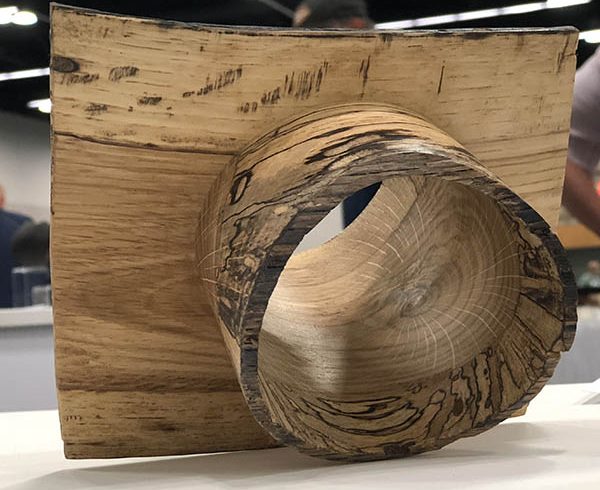
This past Father’s Day weekend saw the arrival of the American Association of Woodturners annual Symposium at the Oregon Convention Center in Portland, Oregon. The AAW, which draws members outside the U.S. as well as across it, is the premier woodturning organization in the country, and has a long and well-respected history. The symposium moves each year from the East Coast, to the central U.S., to the West Coast, so there’s one not too far from you at least once every three years.
The symposium ran for three days, each of which was packed to the gills with demonstrations and seminars taught by well-regarded turners from all over showing off their techniques and secrets. You could learn basics or a difficult turning technique; gain insights into some of the inlay and finishing tricks on display; or simply find out “how did they do that?”
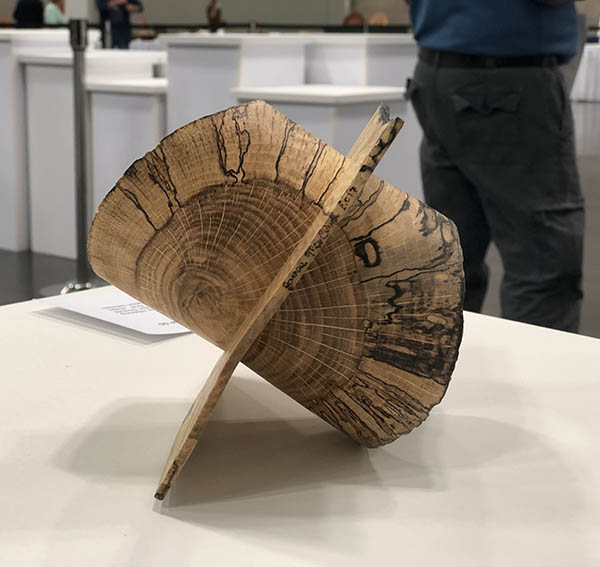
Included was a trade show, a room filled with all the things turners like to buy, from wood and non-wood blanks to the latest improvement in tools and fixtures. For me, that included looking closely at some aftermarket tool-rests made with hardened steel rods on top. They never dent or wear, and were available in sizes and configurations not usually offered by lathe manufacturers. For instance, I was able to find an impressive nine-inch-long rest to fit a standard mini-lathe banjo to replace the small cast-iron one that came with my lathe.
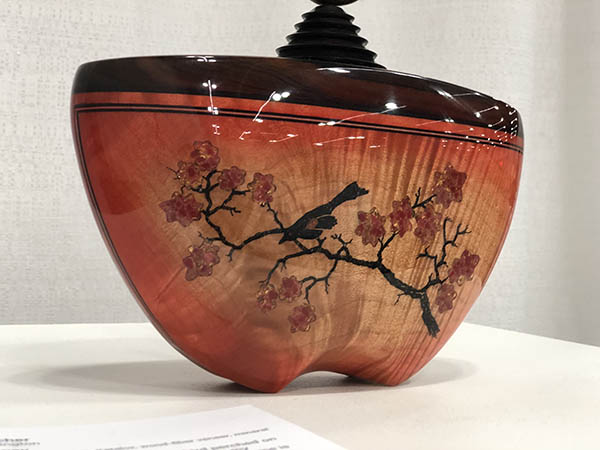
Naturally, there were plenty of other tools and gizmos, from simple but well-made turning tools to a clever fixture that turns perfect spheres. In the sharpening and grinding arena, diamond wheels were front and center at a number of booths, but every option was there. Sorby, known for turning tools, showed off their “wobble chuck,” a diagonally split screw chuck that changes the angle of the stock as you rotate it. It’s a quick and easy tool for offset turning.
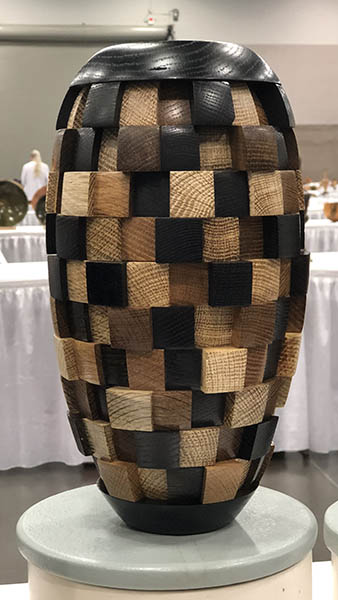
I was particularly taken with a simple upgrade to a common replaceable tip carbide cutting tool. Designed with help from AZ Carbide and sold through Carter (yes, the folks who make those lovely band saw guides), it boasted a few subtle but important improvements. One was that there is a rounded bullnose just behind the carbide insert that acts like the bevel on a normal steel tool. If you like to “ride the bevel” when you turn, as I do, it’s a real plus. A shaft made from a round rod instead of flat tool steel holds the cutter, enabling you to cut at low shear angles as well as head on. Even the handle, fashioned after an axe handle, was just enough different to matter.

Sharing the room with tools and wood were two pet projects of the organization: Youth Turning, and Beads of Courage. The Youth Turning area was set up with long rows of JET mini-lathes where young people could turn under the guidance of AAW volunteers. As they told me, it’s a great way to get youngsters interested in this fine art.
Beads of Courage is an organization to help children with cancer, burns, blood diseases, and chonic illnesses. Because they spend so much time in and out of hospitals, and in and out of various procedures, transfers, and so on, each bead becomes a “reward” and memory for something they’ve been strong enough to endure. I work with children affected by cancer every year and am well aware of how much emotional and personal support they need beyond their medical care. Members of the AAW turned vessels, mostly lidded, as bead holders, or to sell to support the cause.
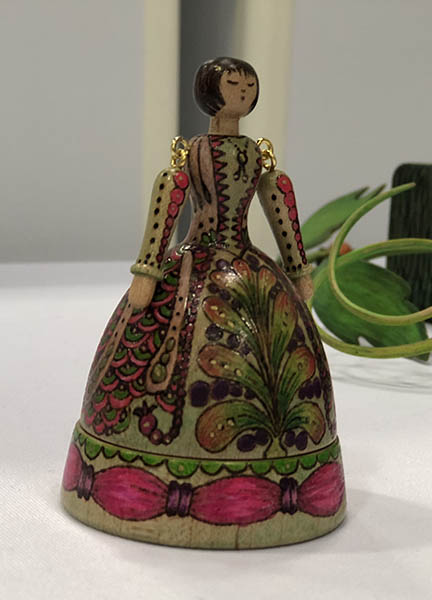
Next door was the exhibit room, which included hundreds of turnings of every imaginable stripe. There was a modest-sized juried section, but most of the pieces were part of the “Instant Gallery.” Any turner coming to the convention can have their piece(s) displayed in the instant gallery on one of many long tables filling the room. Not surprisingly, turnings ran the gamut from the ridiculous to the sublime. Some of the pieces shown are from the Instant Gallery.
The images shared here are just of a few of the pieces that caught my eye. For me, they were a healthy combination of wonderment over how it was done and admiration for what was often clearly endless hours of precision work and pure artistry.







